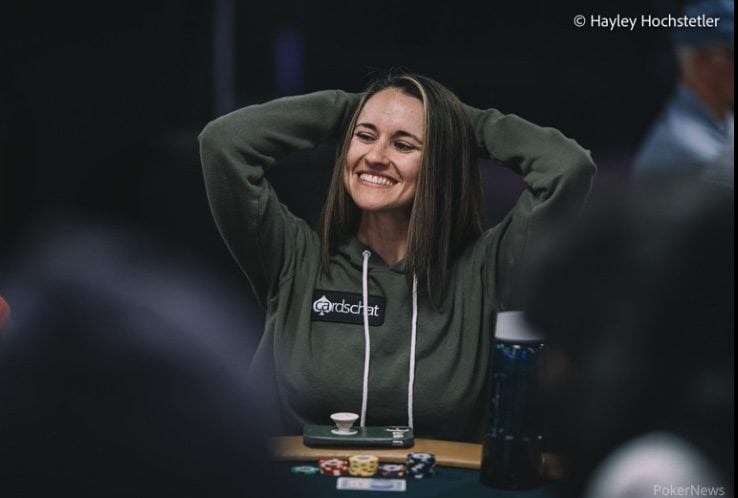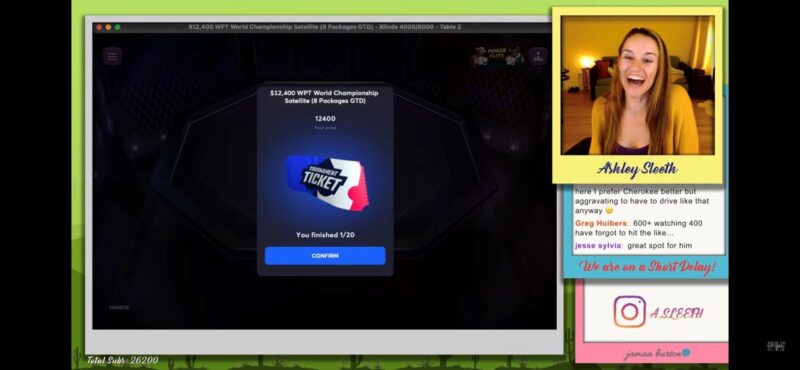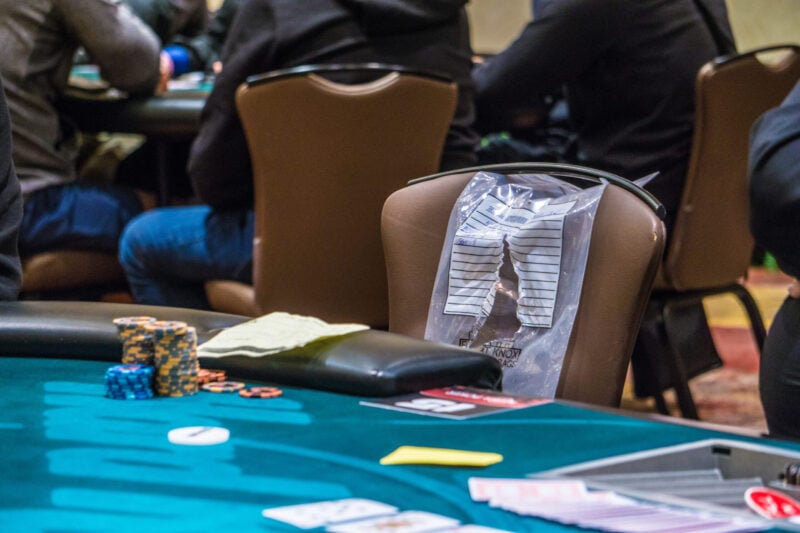You’ve fallen in love with poker tournaments and want to quit your job to go pro. I love your enthusiasm, but let’s figure out if you’re ready. If you can answer ‘yes’ to all of the following questions, you have the best shot at making it as a professional poker player.

1. Are You a Winner?
If you haven’t yet, start tracking your poker results so that you know you’re a winner. Your two most important stats are your ROI (profit divided by buy-ins) and the number of MTTs you’ve played (AKA ‘sample size’). The combination of both stats is important because a high ROI across too small of a sample size is useless. A large enough sample size to determine you are a clear winner online is ~3,000-5,000 MTTs. Professional online MTT players typically consider a 15-30% ROI to be acceptable. Whether or not your ROI is high enough for you to go pro depends on your income goals. Let’s say you can play $2,000 worth of tournaments every session and have a 15% ROI. You will earn ~$300 on average every session. If you can play that amount of volume 5 days a week, you stand to earn $6k/month on average. If that is an acceptable income, a 15% ROI at the stakes you are playing is enough for you to go pro.
It’s important to note that there are so many variables leading to the reality of playing $2k worth of tournaments per session. You will most likely be playing $20-$200 buy-in MTTs to start, so you’ll need to have access to enough online poker sites/games that reaching an average of $2k per session is achievable. Since your goal is to keep variance low (and since you most likely don’t want to play 13 hour sessions every time), you’ll need to be able to play across multiple tables at a high enough level to maintain a similar ROI. (I typically max out at 6 tables, which could be considered on the lower side for a professional.)
Additionally, if losing 3 days in a row causes you to skip days 4 and 5 that week, now your volume -and your expected income- will be lower.
So start tracking these numbers and then you can customize them to fit your income goals. As you get better and start to take shots at higher buy-ins, keeping track of your stats has the added bonus of helping you sell action or get a backing deal in the future.

2. Do You Have A Downswing Fund?
Ideally, you will have 6-12 months worth of living expenses saved up in addition to your poker bankroll. Downswings are an inevitable part of playing poker for a living. They are mentally strenuous enough without the additional burden of financial stress. Setting aside enough money to withstand those losing months will give you a huge mental advantage. It may take you longer before you can quit your job, but when your Aces get cracked for the 10th time and you can’t remember the last time you won a flip, you will be grateful for that financial cushion.
3. Do You Have Realistic Bankroll Rules?
When you have another source of income, you can play whatever stakes you find enjoyable. After you turn pro, withstanding the variance of poker is the only way you can survive in the industry. Therefore, it’s important to follow strict bankroll rules and to know how to decrease variance overall. For online MTTs, it’s recommended that you have at least 100-200 of buy-ins in your roll (based on your avg buy-in). If you’re playing smaller field tournaments (50-150 players), you don’t need as many buy-ins in your roll because you will cash and/or win far more often. Pay attention to the amount of rake the site/casino is taking and what percentage of the field they are paying. If the rake is high, your ROI goes down. (An average rake for online MTTs is ~5-10%. An average rake for live MTTs is ~15%.) If the percentage of the field they pay is low, your variance goes up. (On average, MTTs pay out 10-15% of the field.) Therefore, playing small field MTTs with low rake that pay a decent portion of the field is the best way to reduce variance and build your bankroll. If you’re taking too many big risks with your bankroll, your career as a poker pro could be short-lived.
4. Do You Enjoy Studying Poker?
Besides freedom, one of the most rewarding parts of playing poker professionally is the endless possibility for growth and improvement. If you enjoy learning, you’ll love dissecting the complexities of this game and the humans you play it against. (I’ve even found that many of the concepts you learn along the way also help you grow as a person off the table.) The best pros competing to become elite, spend a healthy 7-16 hours of study time every week. Don’t worry, this can be fun! Finding or starting a poker study group can be a great way to meet others in the community. Hiring a coach for a few hours can help you find leaks in your game so you can improve the most vital things right away. Doing a bit of research to find the software and training methods that work best for you is essential for building/sustaining good study habits. If you have the willingness and discipline to do off-the-table work, you’ll give yourself the best shot at beating the games consistently.

5. Do You Play Online?
You might have noticed that I haven’t mentioned live tournament poker very often. The unfortunate reality is that when you can only play a maximum of 1-4 tournaments a day, it’s much less feasible for you to make a steady and consistent income. If you want to play live only, you will most likely need to mix in live cash games to help curb tournament variance. Otherwise, online MTTs will be essential for your bottom line as a tournament player.
Ultimately, if you’re a proven winner who has money saved up, good bankroll management and are ready to work hard on your game, you can make it as a pro. Take the leap and run hot. Good luck!
For more guides, visit the tournament strategy hub. You can also check out CardsChat’s 30-day poker school to help you become a winning poker player.


